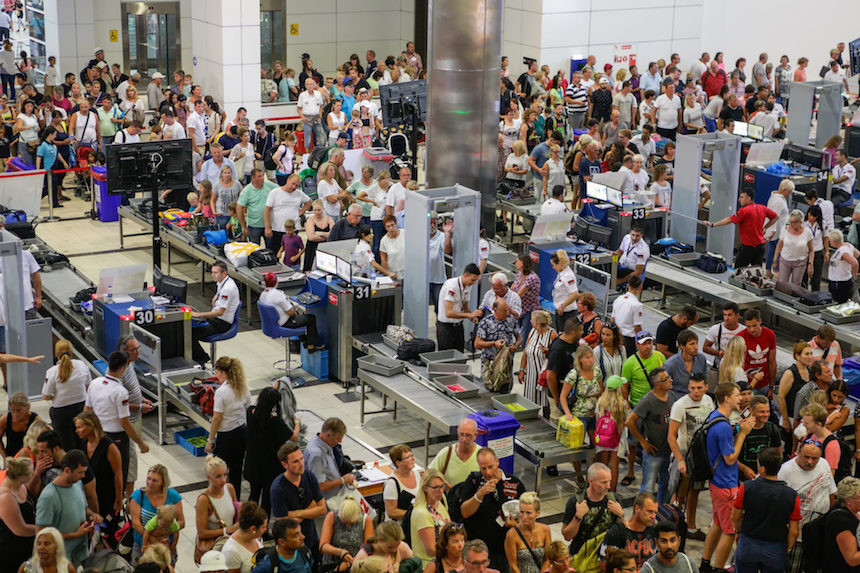
Mounting anti-terrorism security procedures and the Transportation Security Administration’s (TSA) screening processes have launched numerous debates about the protection of civil liberties and equal treatment of passengers. A new study published in Risk Analysis has successfully quantified how much potential air passengers value equal protection when measured against sacrifices in safety, cost, wait time, and convenience.
The study, “Valuing equal protection in aviation security screening,” examined how much American travelers valued the principle of equal protection by quantifying the “equity premium.” SRA says that the equity premium included the following components: monetary costs defined as a screening fee that passengers were willing to pay per flight; wait time defined as the length of time in minutes that passengers had to wait to complete security screening; convenience defined as the proportion of passengers without contraband who are mistakenly singled out for further scrutiny; and safety defined as the acceptable percentage of passengers who board with contraband that was not detected during screening (known as the “miss rate”).
The study is based on the responses of 222 participants in an online survey who were recruited through Amazon Mechanical Turk. Each watched a four-minute video that described the study and explained the equity premiums. Respondents were then randomly assigned to one of three possible two-stage screening procedures that evaluated passengers according to a set of behavioral indicators (such as perceived fear or stress), their demographic characteristics (age, race, sex and/or national origin) or at random. Respondents then completed 10 trade-off assessments to determine how much they were willing to sacrifice to avoid differential treatment.
For all selection procedures, respondents were willing to pay up to $15 and tolerated an increase of up to two additional passengers boarding with contraband to avoid inequitable screenings. When selection procedures focused on demographic characteristics, they were willing to wait an additional 15 minutes. However, respondents who were assigned to procedures that selected passengers at random or according to their behavior were only willing to tolerate an additional five minutes.
Male and female respondents also responded differently. To avoid a less equitable screening, female participants were willing to wait longer and pay more than male respondents. Females were 2.8 times more likely to wait longer than the minimum wait time and 1.7 times more likely to pay more than the minimum screening fee. However, there were no significant differences in fee or wait time allowances between white and non-white respondents.
“We know that travelers value both safety and equity, but what we did not know is how they reconcile these conflicting priorities,” said Kenneth Nguyen, corresponding author and quantitative methods graduate student at the University of Southern California. “The value of the current research is to shed light on how travelers make this trade-off and, perhaps more importantly, uncover factors that affect this trade-off, and suggest ways that stakeholders can incorporate these findings in the design of security policies.”
The overall low numbers suggest that most respondents were only willing to make limited sacrifices for more equitable screening and that they still placed a high value on low costs, shorter wait times, greater safety and convenience. People were willing to give up equal protection for other priorities like minimizing cost and inconvenience and maximizing safety.
SRA says that these results offer valuable insights for the TSA and other security officers. Travelers in this study showed they are much more opposed to screening procedures that use demographic characteristics by making greater sacrifices in equity premiums when experiencing this type of procedure. Even if screening procedures based on demographic characteristics are more effective than random or behavior-based screening, they are perceived as discriminatory and largely unacceptable.
— Read more in Kenneth D. Nguyen et al., “Valuing Equal Protection in Aviation Security Screening,” Risk Analysis (24 April 2017) (DOI: 10.1111/risa.12814)

